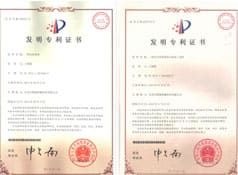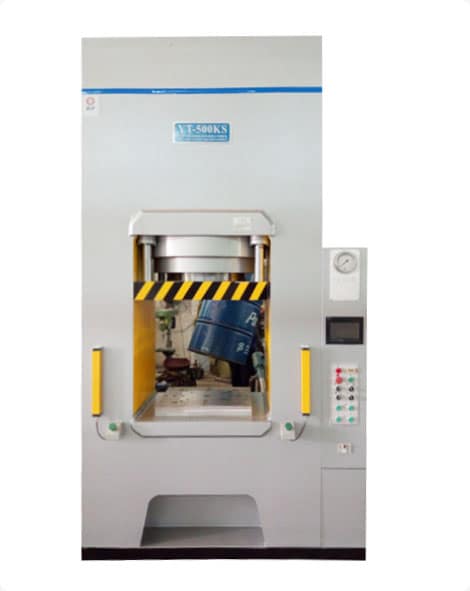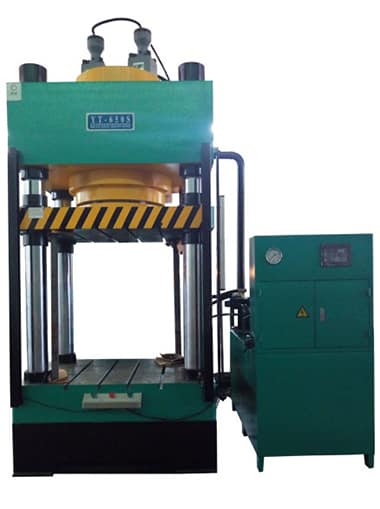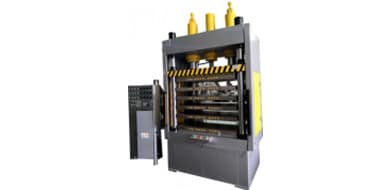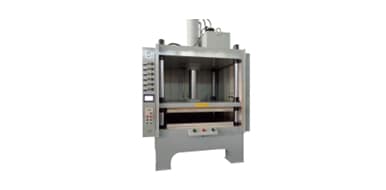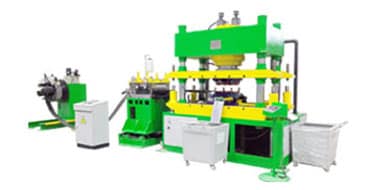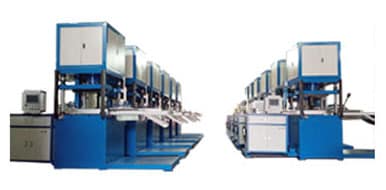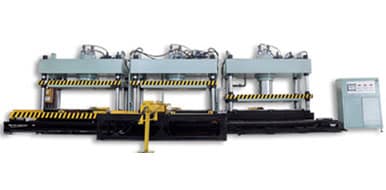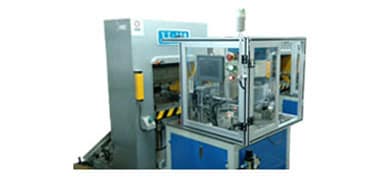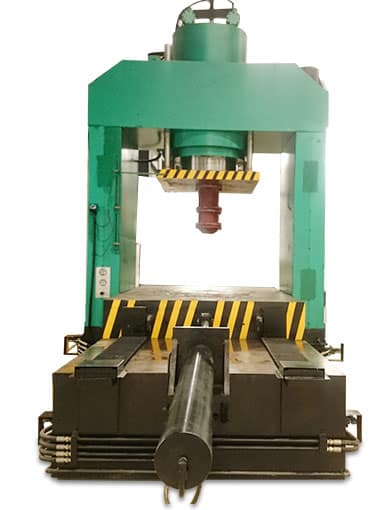How to Make a Hydraulic Press With Syringes
time:2023-06-27 views:(点击 1,080 次)
Hydraulic presses are powerful machines capable of crushing materials quickly and with great force. While they are an invaluable asset in the shop, their purchase and upkeep may prove expensive.
As a way of demonstrating hydraulics' power, conduct an easy experiment. Arrange two syringes against each other with their plungers in competition and observe that when one of them is pushed, its plunger moves much less distance when pushed than when its opponent did.
1. Rubber Tubing
Hydraulic presses are machines that utilize powerful fluid pressure to perform heavy duty work such as binding items together, bending/straightening metal parts or holding materials while they're being worked on. Commonly found in factories and manufacturing plants due to their speed and precision when shaping products on an industrial scale, but they can be costly so having one for home use may not always be feasible.
As an easy way to learn the physics and operation of hydraulic presses, constructing your own simple hydraulic press at home using syringes can provide a great opportunity to experiment with process as well as experiment with design options before selecting or building your desired hydraulic press.
To create your own hydraulic press, you'll need a few supplies such as two identical syringes, rubber tubing and a wooden frame. Fill each of the syringes about half full of vegetable oil to prevent movement during your experiment. Attach each syringe using tubing, making sure they can be connected so that when you press on Syringe A's plunger it exerts force onto Syringe B. Pushing on the plunger of Syringe A will pressurize its liquid contents, forcing it out through tubing into Syringe B and forcing its plunger to move or crush an object with minimal pressure required for lifting or crushing an object. You can measure how much force is necessary in order to lift or crush objects with this instrument.
This project can help you understand hydraulics better while also showing that no matter how hard you press on a liquid (like water), its volume does not significantly change. As an advanced experiment, try repeating this project using air instead of water as this will give an insight into air pressure vs water pressure differences - perhaps giving insight into why certain syringes are able to lift more weight than others.
2. Syringes
Syringes are cylindrical plastic devices with fixed needles designed to transfer liquid or gas from one container to another. Available in various sizes, some syringes are disposable while others can be cleaned and reused; although this practice has fallen out of favor due to concerns over blood-borne diseases. Their design has long been an interest of scientific and engineering researchers as far back as 17th Century references indicate.
Historical disposable syringes were often made of glass and required hand cleaning and refilling; modern disposable ones are usually formed of plastic. There are various styles to choose from; some use a fixed needle while others offer off-center or eccentric tips; all can be connected using a luer slip adaptor that connects male luer lock fittings on syringes to female luer slip fittings on digital pressure meters for measuring air or vacuum pressure (Torr).
Due to how fluid pressure works, smaller syringes tend to produce greater vacuum than their larger counterparts. The strength of the vacuum depends on volume displacement of the plunger; with equal volume displacement for devices of 1ml and 3ml sizes creating the same level of maximum vacuum production while those 5 ml in capacity produce significantly greater.
Safety first! For your own protection and that of others, when handling syringes it is vital to wear rubber gloves and use only distilled water - tap water may contain contaminants which could increase the risk of infection for both yourself and the patient. Although sterilized syringes can often be successfully sterilized via boiling in a pot method this method does not always guarantee 100% effectiveness; unsterilized syringes increase infection risks significantly for all parties involved.
RPD mechanical syringes offer precise control of aspiration and injection with ease, creating vacuum or air pressure as needed. Their unique mechanical linkage between plungers allows index and middle fingers to remain stationary on the barrel for stability while the thumb moves from plunger to plunger to aspirate or inject; making this device simple, straightforward and user friendly for experimenters who wish to control force without taking their hands away from device operation.
3. Hydraulic Pump
Hydraulic presses use two interconnected cylinders - one housing a plunger and the other housing a ram - to generate force. A small amount of pressure applied to the plunger's piston is transferred via hydraulic fluid to its piston in the ram, magnifying its force. Hydraulic systems are commonplace across many industries and applications ranging from lifts/jacks for servicing cars to industrial presses used for metal fabrication and even mechanical arms on garbage trucks.
Boyle's Law can be illustrated using a small hydraulic system. This principle states that liquid can only be compressed so much before its physical properties change; for instance, fill an oral medicine syringe with water and use your thumb to apply pressure; you won't notice any significant shift in its volume because the pressure applied exceeds its total content in the syringe.
For an advanced experiment, use a smaller hydraulic pump filled with air instead of liquid hydraulic oil. This "air over hydraulic" or pneumatic system relies on air rather than liquid to generate force; these systems tend to be cheaper to buy and operate due to reduced energy requirements.
Positive displacement pumps and centrifugal pumps are two popular types of hydraulic pumps. A positive displacement pump relies on its piston to create vacuum within its cylinder; when pushed down, the piston ejects liquid from its reservoir into the cylinder while creating suction. As soon as it returns upward, fluid returns to be recirculated through the system - repeating this cycle until eventually another piston pushes it downward again, creating suction and repeating this cycle until fluid has returned into the cylinder - then back again until it repeats this cycle until finally repeating this cycle is reached again!
A centrifugal pump is a more complex machine. The centrifugal force exerted by this type of pump depends on its motor speed, which is in turn controlled by a control box operated via crank handle or toggle switch. Although more expensive than positive displacement hydraulic systems, centrifugal pumps offer greater capacity of force.
4. Jack
A hydraulic press is an efficient machine used to apply pressure to objects made of metal, plastic, or wood. It consists of two connected cylinders filled with hydraulic fluid connected by pipes; one called the "ram", with its piston being controlled by hydraulic fluid to exert force against an object being pressed; while its opposite called the slave cylinder holds onto it. These cylinders are connected via pipes connected with a hydraulic pump system enabling fast and precise force application by means of this press.
Small lightweight hydraulic presses cost under one thousand dollars and will fit easily in most workshops, while larger heavy-duty presses may cost up to $2,000 or more. When choosing which type of hydraulic press to purchase, be sure to consider how you will use it before making your selection.
Fabricators or small business owners looking for ways to speed up and simplify their work will find that using a hydraulic press can make their tasks quicker and simpler, saving both time and money on labor costs. Furthermore, with its few parts making the press safer and quieter than other machines reducing the chances of it breaking during a project requiring costly repairs later.
At home, an experiment can be an easy and efficient way to learn about how hydraulic systems transmit work. Start by setting up your syringe system on its base from previous experiment and placing two boxes atop output and input cylinders respectively; if both boxes can be moved by your syringe system you know that work can be transmitted using water; otherwise add weight by adding more boxes onto master cylinder.
Or you could try pushing the plunger of the wide cylinder 1 cm forwards and measuring how far the output cylinder moves; this will show how adding work "into" the master cylinder affects how much work "pushed out" through slave cylinder.
Link to this article: https://www.ihydraulicpress.com/nsn/3678.html
Hot Articles
-
How to Make a Hydraulic Press for Knife Making
Hydraulic presses are machines designed to use mechanical force to shape metal. Their unidirectional pressure-applying ram applies unidirectional ……
-
How Much Pressure Can a Hydraulic Press Produce?
Hydraulic presses can provide the power needed for tasks requiring large amounts of force or pressure, helping ensure that jobs are completed effe……
-
How to Make a Hydraulic Press Model
Hydraulic presses are unrivaled when it comes to crushing items, yet their costs may make commercial models prohibitively expensive. By gathering ……
-
How to Make a Ring Using a Hydraulic Press
Hydraulic presses are machines that utilize the physical properties of fluids to exert mechanical forces for engineering, industrial and scientifi……
-
Can a Hydraulic Press Make a Diamond?
Diamonds may be famously hard, but that doesn’t make them indestructible. A simple mistimed blow could crack or shatter them with just a lit……
-
How to Make a Hydraulic Cider Press
If you want to produce large volumes of cider, a press is needed; typically this means using a rack and cloth style press. Hydraulic presses can sav……
-
How to Make Hydraulic Presses
Hydraulic presses are powerful tools designed to crush objects. Anyone with basic knowledge of hydraulic engineering can create one. Hydraulic pre……
-
Can You Make a Diamond With a Hydraulic Press?
Diamonds may be one of the hardest natural substances on earth, but that doesn’t make them indestructible. A single blow from a hammer could……
Latest News
-
How to Make a Hydraulic Forging Press
Hydraulic forging presses are indispensable tools for metalsmiths, serving to cut, bend, shape, and press metal into various forms. Furthermore, t……
-
How to Make Your Own Hydraulic Jewelry Press
Hydraulic presses can save both time and money in jewelry production. In this workshop, participants learn basic forming techniques using the smal……
-
How to Make a Hydraulic Press
Hydraulic presses can be indispensable tools in various environments. Fabricators rely on them for bending and forming metal parts, while recycler……
-
Calculating How Much Force a Hydraulic Press Can Exert
Hydraulic presses use hydraulic power units to move their ram, providing enough force for metalworking processes such as forming, swaging, punchin……
-
How to Make a Pizza With a Hydraulic Press
Hydraulic presses are usually thought of as tools used for crushing materials, but those behind YouTube’s Hydraulic Press Channel set out to s……
-
How to Make a Hydraulic Fruit Press
Hydraulic fruit presses provide a straightforward and cost-effective method of extracting juice from apples, pears, grapes, red currants or other fr……
-
How to Make a Hydraulic Shop Press
A hydraulic shop press can serve multiple purposes. From repair jobs and compacting powders, to creating molds. Presses can also help separate rus……
-
How to Make a Bottle Cap Hydraulic Press
Be it homemade beer brewing or home brew brewing, bottle caps will be necessary to secure your beverages. A capping machine can help speed up this……


